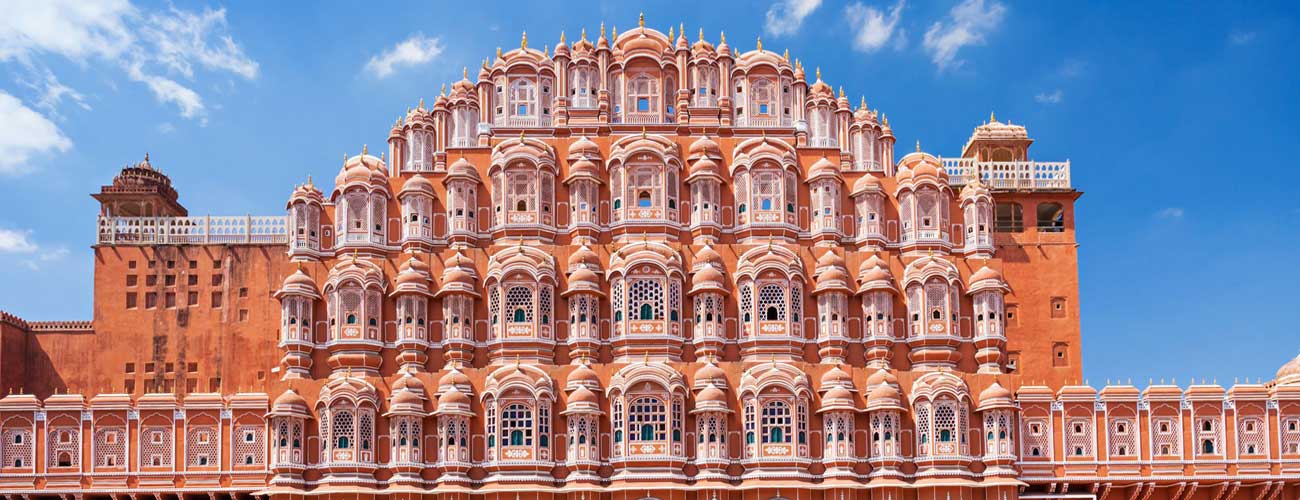Hawa Mahal is a palace in Jaipur, Rajasthan that is constructed of red and pink sandstones. The palace sits on the edge of City Palace and extends itself to the women’s chambers, Zenana. Maharaja Sawai Pratap Singh built the palace in 1799 with its inspiration being the Khetri Mahal in Jhunjhunu, which is similar in design. The design of Hawa Mahal is unique because of its five storey exterior with 953 small windows called ‘Jharokas’, which, together, look like a honeycomb of a beehive. The windows have intricate latticework, which allowed the royal women to have a look at the daily life and festivals celebrated in the streets.
The architecture is such that it allows cool air to pass through the palace because of the Venturi effect providing natural air conditioning inside the palace in summers. The top two floors have the width of just a single room and the lower floors have a patio in front of them. Lal Chand Ustaad, the architect of the building made it with red and pink sandstones keeping in mind the overall look of the ‘Pink City of Jaipur’.


